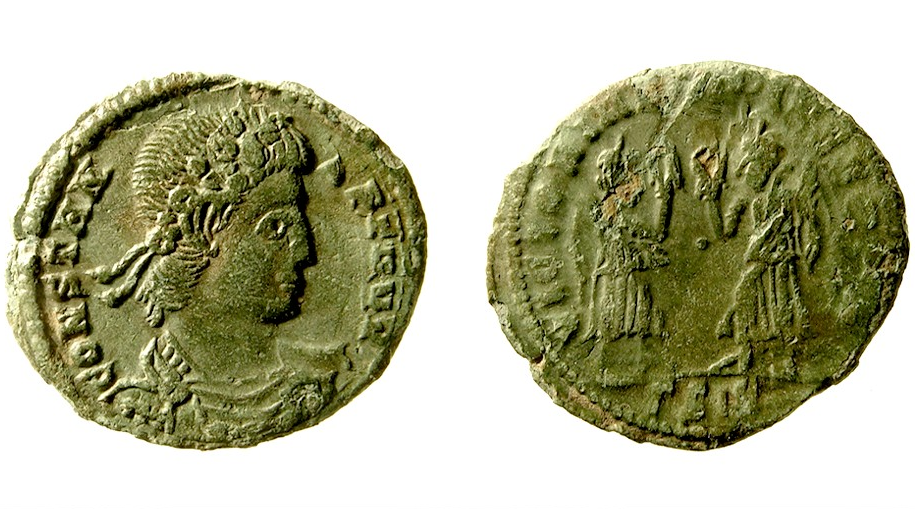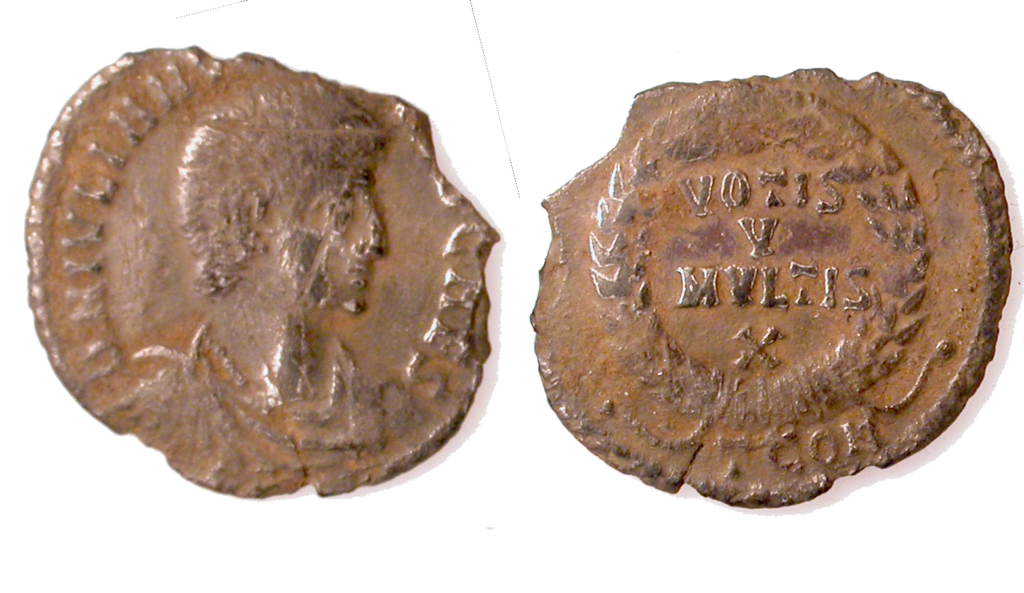The problem with beads, of course, is that they are beads. They’re small, unremarkable objects that do not carry a very explicit intrinsic message. Of course, they can mean the world for the individuals to which they belong, as part of a necklace or bracelet, but it is very hard to see how the people wearing these objects could know, and give meaning to the provenance of these beads. Indeed, the small quantities of ‘Roman’ glass beads found on Bali make it likely that they were not aware at all of their exotic origins. Just as Pliny did not know about the Maluku islands, people in the Indonesian archipelago may not generally have known that something like the Roman Empire existed – indeed, many may barely have been aware of the existence of India or China.

Still, there were of course classes of objects that revealed much more direct links to the Roman world, and coins are the most durable example. Indeed, Roman coins are known to have travelled significant distances, and they carried explicit imagery, including, from the Augustan period onwards, the portrait of the emperor under whose authority coins were struck. Even without any contextual information, these coins offered a direct visual link to their place of origin, and even people who would not know anything about the Roman empire (or, indeed, about coinage), would be able to recognize that this was an object with visual information that came from some other place – thus creating at least the notion that that other place existed – whatever it was – and offering a starting point for a narrative about that place.
The question is whether Roman coins travelled all the way to the Far East, and, if so, how. There is ample evidence for Roman coins in India from the Augustan period onwards – I will undoubtedly write about this at a later moment – but beyond the Bay of Bengal, things were more complicated. Nevertheless, perhaps surprisingly, there are reports of Roman coin finds from South-East Asia, even if they often lack detailed information about the life course and ‘taphonomy’ of these coins—how they travelled, got lost, and ended up buried. A recent (2018) article by a Hungarian team has brought together and critically assessed all the evidence known so far.
On Java, one discovery stands out. In 2017, a substantial set of ancient coins was reportedly found in the Brantas river, near Trowulan – the former capital of the (medieval) Majapahit empire that I briefly mentioned two weeks ago. The finds, made by local gold panners, included ten Roman coins, and a number of medieval coins from China. What is interesting, however, is that the Roman coins all date from roughly the same era – seven were struck between the 320s and the 360s CE, two date to the 270s, one to the 220s – if found in a proper archaeological context, they would be interpreted as reflecting a live set of coins from the later fourth century CE. Interestingly, the coins represented little monetary value: they were all bronzes, and belonged to the smaller denominations.

What is going on is very hard to tell: even if the Roman coins together kind of make up a credible wallet from the later fourth century, it is unsure when and how they travelled, why they ended up in Eastern Java, and how they ended up in the Brantas river together with several much later Chinese coins. The fact that they are bronze coins, and not silver or gold makes it unlikely that they represent a modern collection that was simply dumped in the river, though the option cannot be entirely discarded. That there are few coins from after the fourth century suggests that these coins originally travelled together, and did so during Late Antiquity, but they can barely have been brought in as a means of payment.
Two things should be emphasized. First, it appears to be an isolated find without a context. Loose coins appear to be found elsewhere in Indonesia – at least, they appear on the market – but not (yet) during excavations, and not in sets. Second, these coins constitute no evidence for a widespread circulation of coins that means that people actually saw these objects on any regular basis. Future finds could change that, but as things stand, the Roman coins from Trowulan are (and should be seen as) little more than a historical anecdote.
Still, it can be argued that, given the small monetary value of the ensemble, one option is that this coin find reflects a Late Roman individual traveling all the way to the far east. Another possibility is that these coins reflect an exchange of gifts between a Late Roman traveller and someone from East Java, which may also have taken place in India. There are multiple other possible scenarios, and we should be careful not to fall into the trap of overinterpretation. Nevertheless, the find is tantalizing, and begs for more.
Hoppal, K. et al. ‘All that glitters is not Roman’ Roman coins discovered in East Java, Indonesia. A study on new data with an overview on other coins discovered beyond India,’ DissArch 3.6 (2018): 461–492. DOI: 10.17204/dissarch.2018.461
Miko Flohr, 28/01/2020
